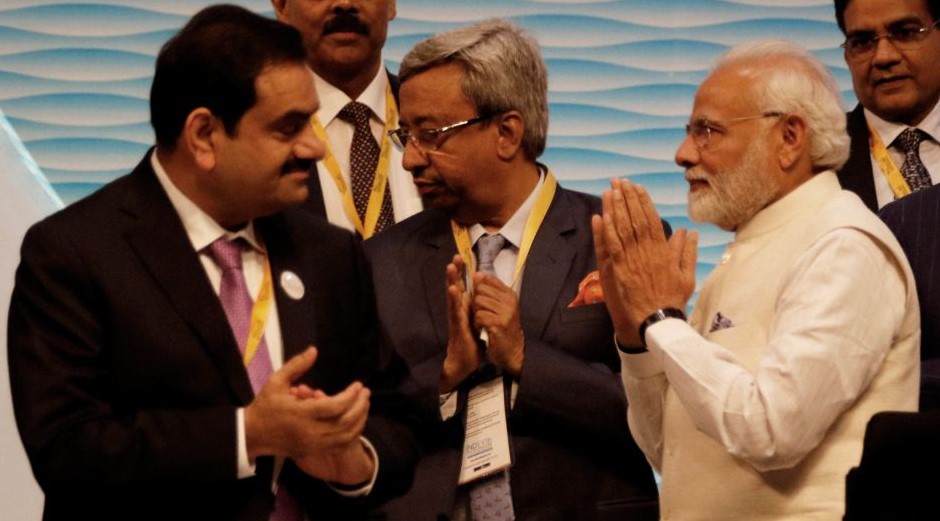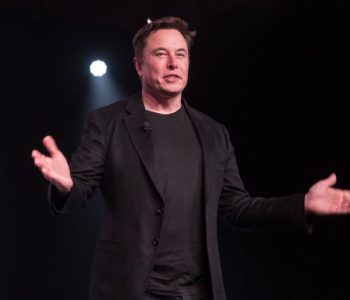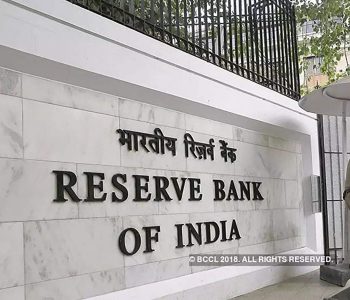Gautam Adani was a college dropout. Now he may be too big to fail

KATHMANDU: On a late August evening in New Delhi, journalists’ phones started buzzing with messages. Indian billionaire Gautam Adani’s conglomerate had just launched a hostile bid to take over an influential broadcaster in the capital.
The infrastructure tycoon is known for making bold and expensive acquisitions in diverse fields. Yet, his attempts to acquire New Delhi Television (NDTV) sent a frisson of fear through Indian journalism, reigniting concerns about shrinking editorial freedom in the world’s largest democracy.
That’s because NDTV is one of the few major broadcasters left in India that is often critical of Prime Minister Narendra Modi and the ruling Bharatiya Janata Party. And 60-year-old Adani is perceived to be one of Modi’s closest business allies.
The reaction from investors was much more enthusiastic. NDTV’s stock gained over 50% in the days following the announcement.
Markets have been cheering for the businessman, and his breathless pace of expansion, since the start of the pandemic. They are betting on the self-made industrialist’s ability to grow his business in sectors that Modi has prioritized for development.
“Where Adani has been very astute is that he has aligned his own commercial interests with the interests of India and the interests of the prime minister of India,” said Tim Buckley, director of Sydney-based think tank Climate Energy Finance.
Shares of Adani’s seven listed companies — in sectors ranging from ports to power stations — have risen between 10% and 260% since the start of this year, with most of them nearly doubling in value over the last nine months, Refinitiv data shows.
As a result, he briefly became the world’s second-richest man in September, according to the Bloomberg Billionaires Index, overtaking Amazon founder Jeff Bezos. It was the first time anyone from Asia had ranked so highly on the list, which has long been dominated by white tech entrepreneurs.
“Adani’s recipe for success mixes strong project execution with extreme tolerance for risk taking and high debt levels, all helped along by close political connections in New Delhi,” said James Crabtree, executive director of the International Institute for Strategic Studies in Asia, and the author of The Billionaire Raj, a book about India’s wealthy.
The speed at which the billionaire has climbed to the top of the super-rich ladder is mind-boggling. When the pandemic started in 2020, Adani’s wealth was estimated to be around $13 billion. Two years later, he is worth $125 billion.
Much of his fortune is tied up in the sprawling Adani Group, which he founded over 30 years ago. The conglomerate, worth nearly $220 billion, has established businesses in industries ranging from logistics to mining, which have all thrived in recent years. And Adani is in no mood to slow down, launching an astonishing expansion blitzkrieg and moving into diverse fields such as media, data centers, airports, and cement.
“Even in India, where the super-rich have grown hugely in number, his wealth accumulation record is extraordinary and unusual,” Crabtree told CNN Business.
But this growth comes with a big risk.
Adani’s juggernaut has been fueled by a $30 billion borrowing binge, making his business one of the most indebted in the country. Analysts are worried, especially at a time when interest rates are being hiked globally. In India, the key rate has increased four times since May, to 5.9%.
There are other concerns: Critics say his rise rests heavily on crony capitalism, and question if his empire will survive unscathed if there is a change of power in New Delhi.
The media-shy tycoon did not respond to an interview request.
Turbocharged growth
Adani, a college dropout, has at times been compared to business magnates such as John D. Rockefeller and Cornelius Vanderbilt from America’s Gilded Age, who built vast monopoly businesses in the 1800s.
A first-generation entrepreneur, Adani began his career with diamond trading, before setting up a commodity trading business in 1988, which later evolved into Adani Enterprises Limited (AEL).
Soon after, India launched groundbreaking reforms, which turbocharged its economic growth, and Adani grew his fortune alongside. In 1994, AEL became the first of his companies to list on the stock exchange in Mumbai.
A year later, Adani started operating the Mundra Port in Gujarat, a state in western India where the businessman and Modi both hail from. Often called the group’s “crown jewel,” Mundra Port is the country’s biggest commercial port by volume.
AEL functions as an incubator for Adani’s businesses. Once they have matured, they are spun out, often via a stock market listing. Many of Adani companies have become leading players in their respective sectors.
He owns India’s largest private port operator and its biggest private thermal power producer. He is not only one of the largest developers and operators of coal mines in India, but also operates the controversial Carmichael Coal Mine in Australia, which has faced fierce opposition from climate change campaigners who say it is a “death sentence” for the Great Barrier Reef.
In some sectors, Adani has become a leader through strategic purchases. In May, Holcim (HCMLY) sold its India cement business to Adani for $6.4 billion, making his group the country’s second-largest cement manufacturer.
Recently, he also became India’s largest airport operator, mainly by scooping up airports through a government privatization drive, even though he had no prior experience in the industry.
While his empire is built on fossil fuels, the tycoon is also investing billions of dollars in clean energy, an ambition that aligns with India’s long-term climate goals.
Most of the companies in the Adani empire are held closely by the billionaire, his family and associated firms, including nearly 75% stakes in AEL, Adani Power, and Adani Transmissions.
He has also attracted partnerships with major global companies, including running joint ventures with French energy giant Total Energies (TTFNF) and Singaporean agribusiness group Wilmar International (WLMIF).
“He buys monopoly assets, and he runs them really well,” said Buckley, who has been tracking Adani for a decade.
But some analysts say that the tycoon’s aggressive expansion may be bordering on recklessness.
‘House of Debt’?
Worries about Adani’s debt-funded growth are not new. In a 2015 report called “House of Debt,” Credit Suisse warned that Adani Group was one of 10 Indian conglomerates under rising “financial stress” due to their borrowings.
Yet, the Adani Group has continued to raise billions from Indian and foreign banks.
According to a Credit Suisse report in September, Adani Group’s gross debt level has increased over the past five years from 1 trillion rupees (about $12 billion) to 2.6 trillion rupees ($32 billion).
CreditSights, a research firm owned by Fitch Group, in August published a report about Adani Group titled “Deeply Overleveraged” in which it expressed strong concerns.
Analysts Lakshmanan R, Rohan Kapur and Jonathan Tan warned that the group risked spreading itself too thin, adding that they remained “cautiously watchful” of its appetite for expansion.
“In the worst-case scenario, overly ambitious debt-funded growth plans could eventually spiral into a massive debt trap, and possibly culminate into a distressed situation or default of one or more group companies,” they added.
Adani Group responded with a 15-page report, saying that the “leverage ratios” of its companies “continue to be healthy and are in line with the industry benchmarks in the respective sectors” and that they “have consistently de-levered” in the last nine years.
CreditSights’ analysts later revised some numbers but added that their “views have not changed from its original report.”
Powerful political connections
Some critics — including journalists and prominent politicians from opposition parties in India — have claimed that Adani’s closeness to Modi have contributed to his meteoric rise.
“The duo were said to get on well,” Crabtree wrote in his 2018 book, noting that the businessman was “loyal” to Modi, even defending the then-chief minister of Gujarat in the aftermath of violent religious riots in the state in 2002 that led to the deaths of more than 1,000 people, most of them Muslims. At the time, critics accused Modi of turning a blind eye to the killings.
Rivals also questioned Modi’s use of Adani aircraft while he was campaigning to become prime minister in 2014. In an interview with the Economic Times, the billionaire denied there was anything inappropriate about the arrangement and said that none of the private planes were used for free.
Over the years, both the ruling party and the industrialist have denied any suggestion of favoritism.
Some experts say Adani’s empire has now become too big to fail and thus may not be affected by any change in power in New Delhi.
“If you are the newly elected prime minister of India, do you really want to really piss on the third-richest man in the world?” said Buckley at Climate Energy Finance.
India, which is the fastest-growing major economy in the world, needs people like Adani, he added.
“They can access global capital at a scale that India needs to drive … growth of its economy,” Buckley said. “There is every opportunity, now that Adani is the most powerful man in Asia, that he spends the rest of his life cleaning up his legacy, the way John D. Rockefeller did.” cnn














Facebook Comment